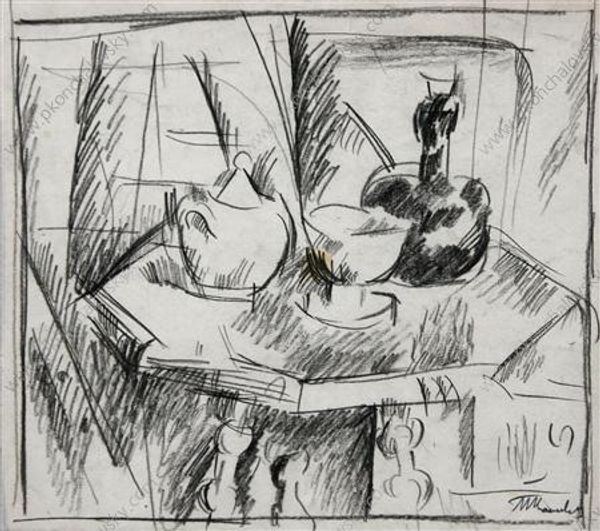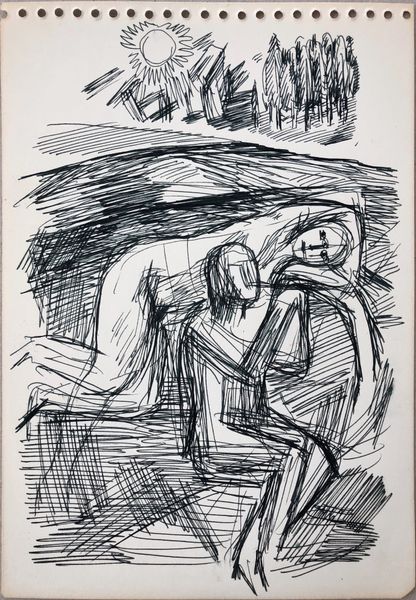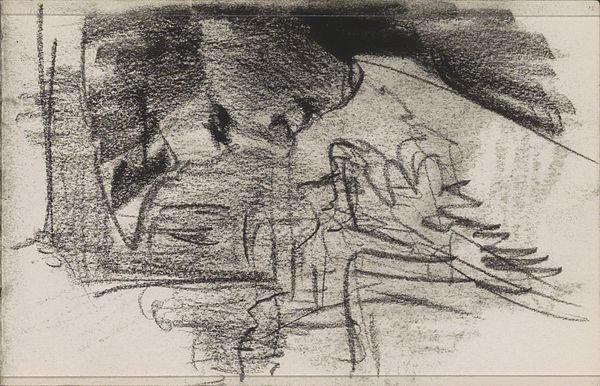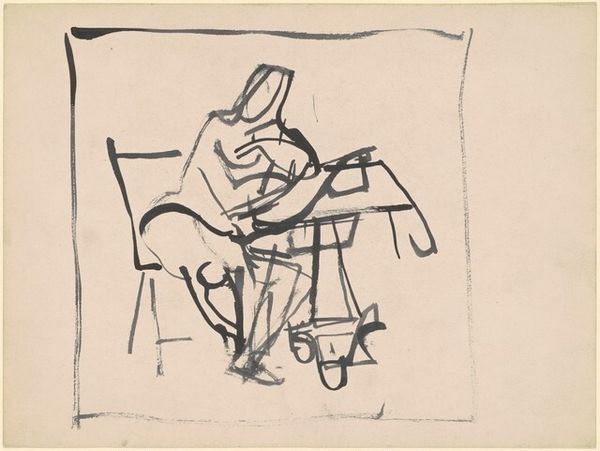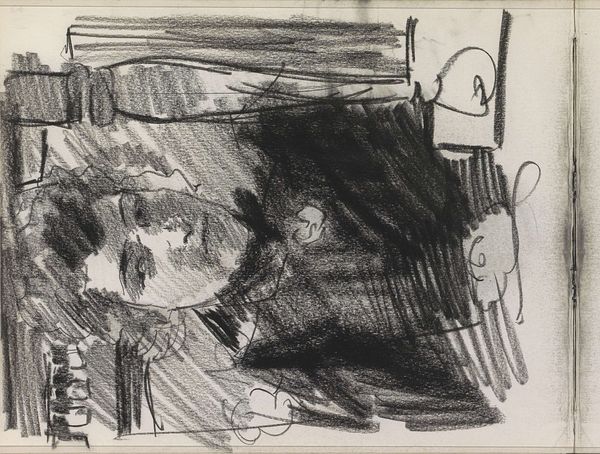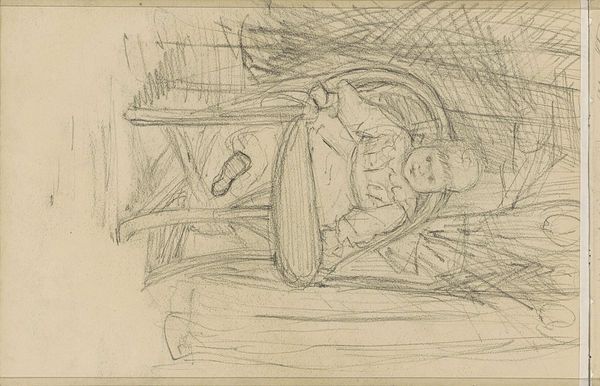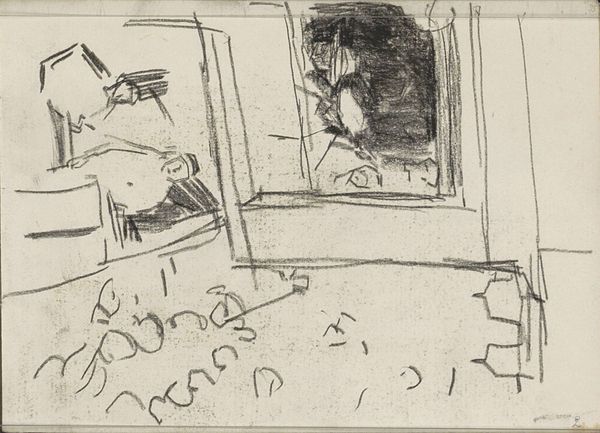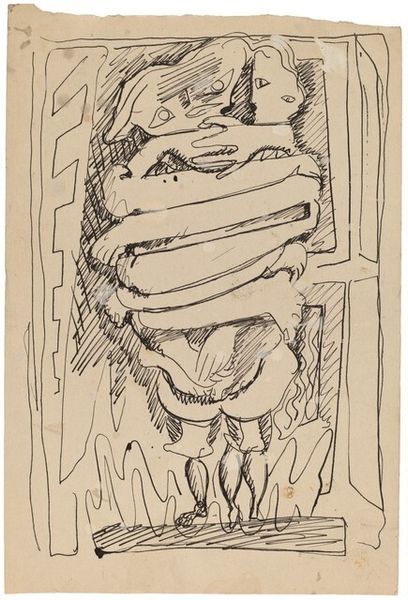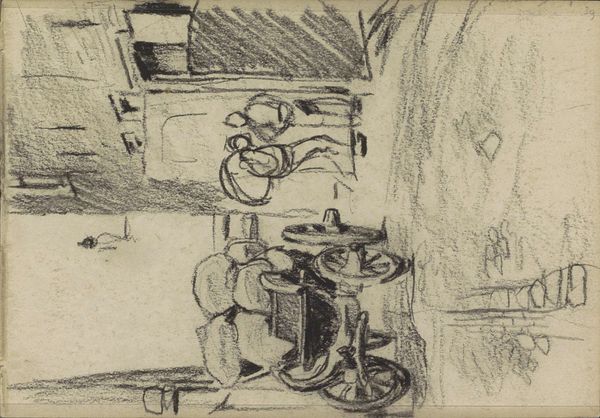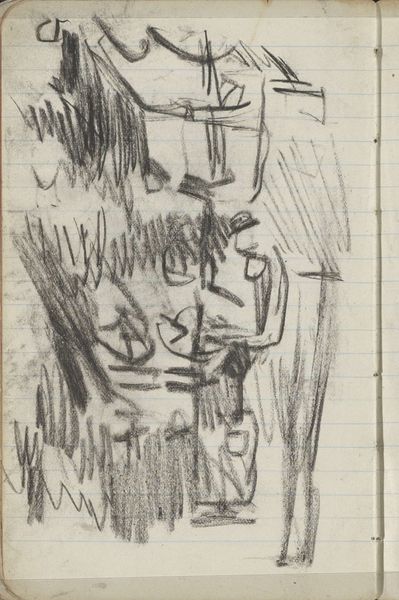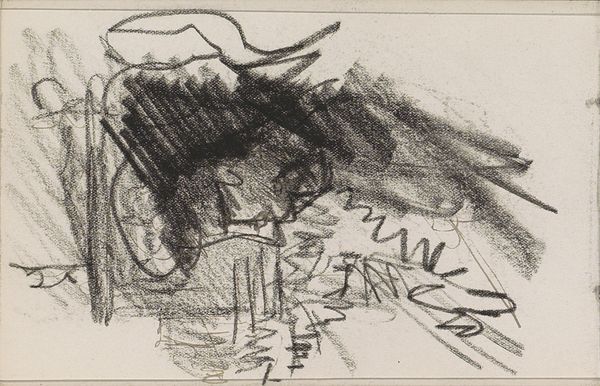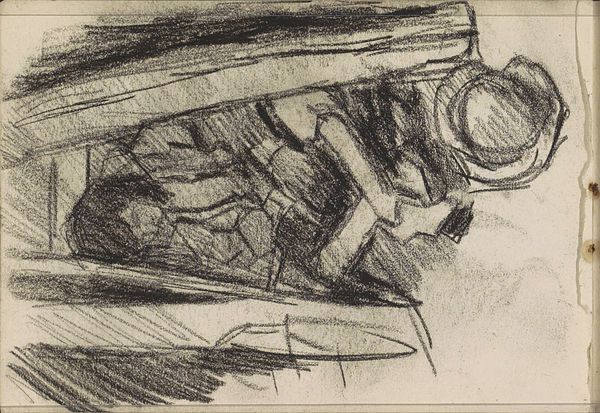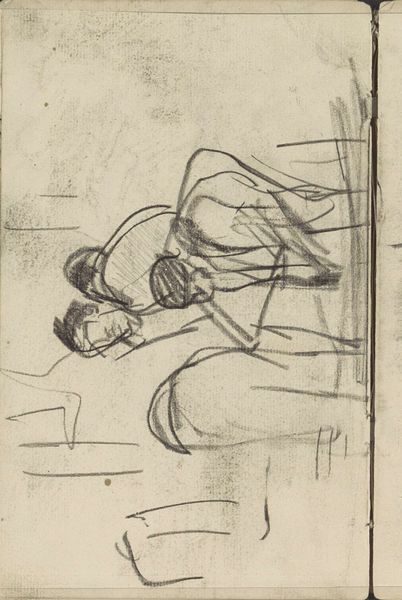
drawing, graphite
#
drawing
#
geometric
#
graphite
#
modernism
Copyright: Public domain US
Curator: Standing before us is Pyotr Konchalovsky’s 1919 drawing, "Still Life with a Tray," executed in graphite. Editor: It has a raw, unfinished quality, wouldn't you say? The lines are so immediate, almost frantic, yet there's a careful arrangement beneath it all. Curator: Indeed. There's a tension between the hasty application of graphite and the rather deliberate arrangement of objects. Given the context of its creation – a time of immense social and political upheaval in Russia – does this aesthetic decision reflect anxieties of the time, do you think? Editor: The visual symbols absolutely speak to broader anxieties, which you point out well. Still life often functions as a means to arrest time. In Konchalovsky’s work we don't find a polished presentation but more a search to hold onto and record these ordinary objects using his particular gaze as the social sphere and material conditions around the artist were changing rapidly. Curator: You are quite right. It serves as an act of preserving, perhaps even elevating the domestic. Do you think the style helps achieve that? It feels more modern. Editor: Certainly, elements of modernism, namely the flattening of the picture plane and fractured representation of forms, invite one to see how those domestic items were rapidly moving to have greater social meanings and political charge, especially if people don't have them. What does domesticity mean if some in your community struggle to acquire a teapot or nice glass to hold their beverages in? Konchalovsky certainly invites that interpretation by use of certain geometries. Curator: And the objects themselves... the flowers barely sketched, the dishware, that peculiar tray shape… do they carry any symbolic significance beyond the obvious? Editor: Undoubtedly. Notice how he is trying to capture flowers – not the plants as objects but only their vague shape. I see his method here as recording gestures; perhaps a record for himself to later look at? The same gestures are visible across the pitcher, too. It looks to me that we are seeing a study of what still life itself means, by presenting objects not as a way of recording his ownership, but by documenting objects which can potentially become socially accessible symbols. Curator: That's a compelling point, I didn't consider that angle. It adds a layer of commentary. Editor: Precisely. It really makes you ponder the still life tradition. He is not showing it to us in the conventional format. That really elevates this from simple formalism into something very potent, historically. Curator: Thank you, this exchange has changed my mind about how to position the work and what information would benefit our audience the most. Editor: Wonderful. It's through this collective pondering, our engagement with art and objects through time, that it grows more nuanced, no?
Comments
No comments
Be the first to comment and join the conversation on the ultimate creative platform.
